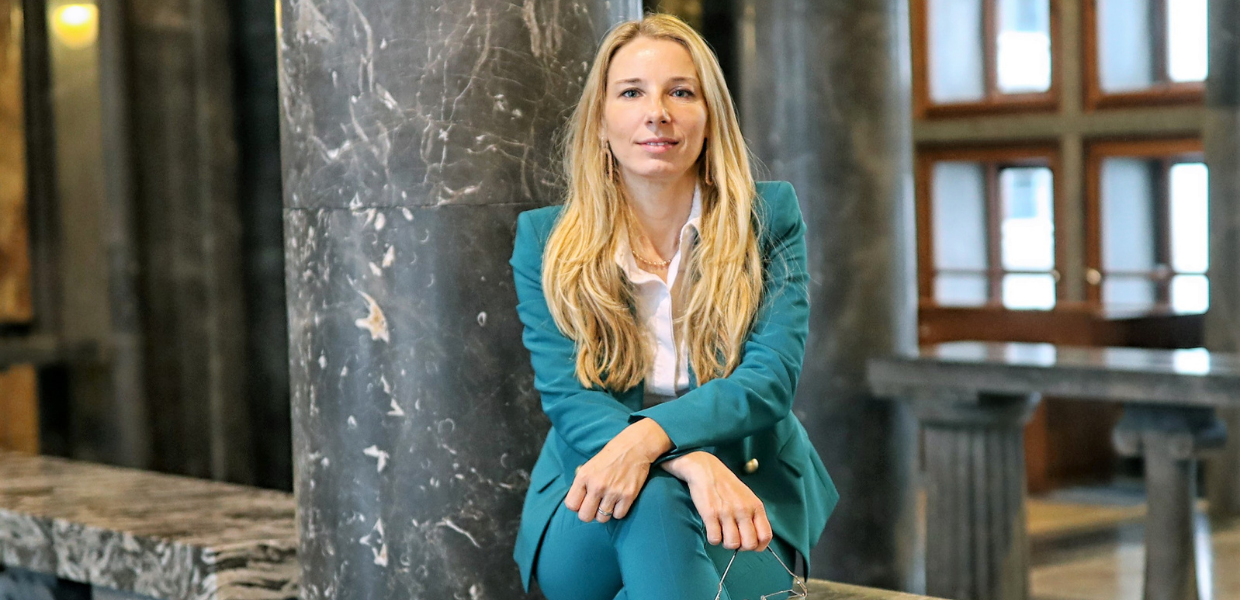How did you enter your profession?
Once upon a time … no, seriously, some time before the year 2000, I visited an exhibition in a Franciscan monastery in south-eastern Slovenia. There was a lovely collection of several old-masters prints on display, including some of Albrecht Dürer's single-sheet prints. In addition, there was also a beautiful 500-year-old library in all its glory. It was love at first sight, resulting in my enrolment in library and information science studies. After four years at the faculty I started my research work in that same Franciscan library. As the library was without a proper catalogue, it seemed reasonable to compile one, starting with its oldest and the most comprehensive collection of the 16th century printed editions.
While working in the Franciscan monastery and continuing my studies at graduate level, I was employed as a researcher on international projects in the National and University Library of Slovenia. All projects were related to digitisation and digital enhancement tools, which gave me new experiences and knowledge of unlimited possibilities for accessing and reusing cultural heritage in the digital environment. The historical insight merged with modern technology into a new awareness, guiding me on a fascinating journey.
After receiving my PhD degree in 2012, having two children, publishing two books and establishing a new university library at the Nova University, I came back to our National and University Library, to plan the development of the library operations and services.
In the last year I’ve had the most honourable opportunity to cooperate in the Europeana Network Association Members Council, which I deeply appreciate.
What are you currently working on?
There are two major tasks that are in the spotlight of our work at the moment. The first is an international project Art of Reading in the Middle Ages, of which our library is the coordinator. The project’s eight partners from seven European countries are working together to digitise, share and present medieval content with Europeana that could be applicable for a variety of purposes. It is a charming project with interesting results for curators, educators, students, researchers as well as the general public.
On the other hand, I am putting all my efforts into the strategic development of digitisation in heritage institutions on a national level. I am focusing on data interoperability by fostering and enhancing the use of internationally adopted, standardised metadata models recommended by Europeana in different Slovenian GLAM institutions. We aim to build a sustainable and reliable common platform supporting the country’s heritage science, innovation and development. The National and University Library of Slovenia is already an established national aggregator and trusted partner of Europeana, which I find most important in terms of national policy planning.
What are some of the challenges in your role? What are some of your favourite elements?
We are living in an age of digital renaissance; we are right in the middle of all the changes happening in our society. Of course, we are all, myself not withstanding, focusing on ‘everything digital’. We can only dream of and imagine what the aftermath of the digital baroque will bring us and when it will all start. So, the biggest challenge I see is in recognising future paths of development and key areas to be addressed today to stimulate that progress.
Progress and growth are also my favourite elements of work. Seeing results is what makes hard work worthwhile.
What was your motivation for joining the Members Council?
I have been following Europeana’s development since its beginning and from the first digitisation projects I worked on in 2009. The Association is, I guess, one of the most multidisciplinary networks of highly specialised professionals in Europe and one of the main cultural promoters of cross-border cooperation. The motivation is obvious – to be able to participate and learn from my colleagues, and possibly to participate in creating changes.
What do you plan to do as a Members Councillor?
As elected Councillor my personal obligation is to accelerate transdisciplinary metadata connectivity beyond standardised schemes, to boost user experience and accessibility to digitised cultural heritage on European level. Therefore, to build on our common European identity founded on comparability and diversity of digitised cultural objects available on Europeana.
Just recently I have also joined the Europeana Research Community Steering Group, where, I hope, I will be able to learn more about good practices of data connectivity and linking for access and reuse of digital cultural heritage in science. I look forward to actively participating in the Europeana Research Community by presenting the good practices and solutions started in our country.



